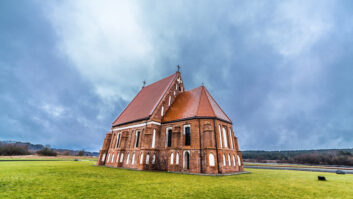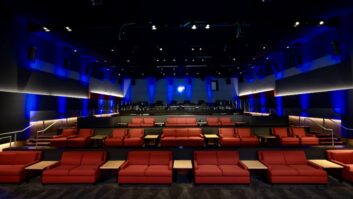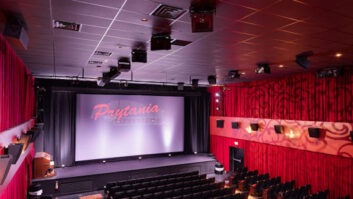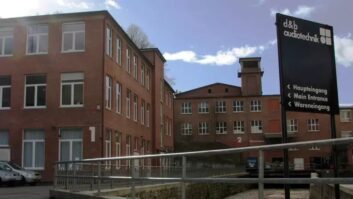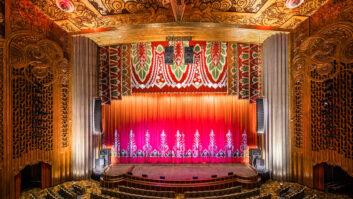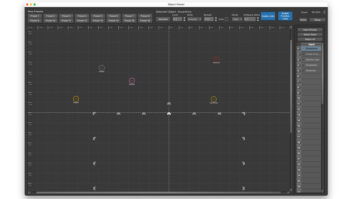ASHEVILLE, NC (12.17.20)—The late Tom Patterson is a local hero: a man who, by daring to dream, changed the face of his country and the economy of his hometown. In 1952, with a $125 grant from the City Council, Tom set out to establish a six-week Shakespeare Festival in Stratford, Ontario. Now, 66 years later, the Stratford Festival operates year-round and has welcomed 28 million theatregoers, generating billions of dollars’ worth of economic activity for the city. In 2020, to mark the 100thanniversary of his birth, the Stratford Festival dedicated a new theatre to Tom Patterson.
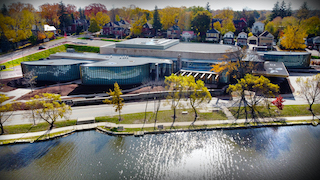
“The old version of the Tom Patterson Theatre which this replaces was built into what used to be, at various times, a casino, concert venue, curling club, and badminton club; and so because of the odd shape of the building, it evolved into a long runway-style thrust stage,” states Peter McBoyle, long time Festival Sound Designer and audio design consultant for the project. “The shape of that stage, although not conventional for theatre, was loved by actors, directors, and audiences, and the goal of the new 600-seat Tom Patterson Theatre was to keep the shape and feel of the old stage as much as possible but put it in a modern context.”
McBoyle said the shape of the stage presented a huge challenge from a sound point of view because of the long- thrust stage with audience members on three sides (four when the theatre is used in “the round”) and the audience is not that many rows deep. “We needed to cover a great length of audience and keep the energy off the stage. The acoustics were a challenge too because the audience sections are not that deep, so you quickly generate reflections off the back wall; and in the downstage end, the shape of the room is semi-circular and tends to direct the sound right back to the middle of the downstage area. The key to it all is having as much control as you can of the coverage of the main sound system to keep the sound where you want it and avoid sending it where you don’t. The upstage wall is removable, creating the a full “in the round” configuration. This wouldn’t be done show to show but rather season to season.”
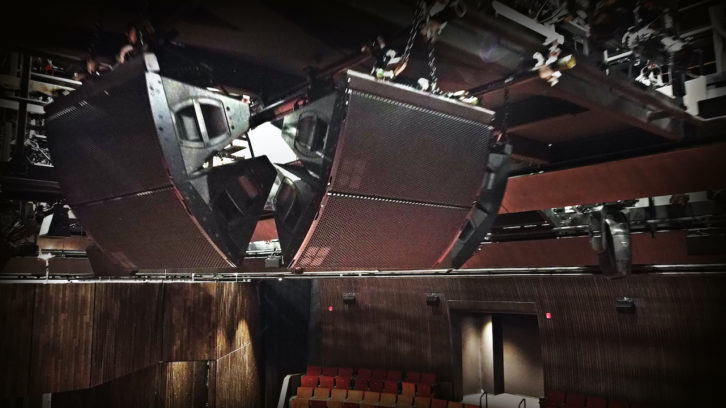
Enter the d&b A-Series augmented array. “The tight vertical coverage pattern of the A-Series (30 degrees) and the control you get arraying them with small splay angles allowed us to really address these challenges,” notes McBoyle. “We were able to get the coverage where needed and have it drop off dramatically where not required. We originally started the design of the system around the d&b T10 which is what we have at our Festival Theatre, but the Tom Patterson Theatre just doesn’t have the height to deploy line arrays. So, the A-Series was the perfect tool for the applications being somewhere between line array and point source. In fact, the A-Series was in development when we were designing the system and it seemed like such a good fit that we specified them without even hearing them based on how they would address this particular challenge and of course based on my experience with the consistent quality of d&b products over the years.”
The system was installed by Horizon of London, Ontario in conjunction with the Stratford Festival IATSE crew. McBoyle was the system designer and also verified and tuned the system. Michael Duncan is the head of sound for the Tom Patterson Theatre and he worked with McBoyle on the design and oversaw the installation and commissioning throughout the project. David Campbell is an Associate Technical Director who manages the sound department for the entire Festival, and he was very much involved in the process from the beginning as was Greg Dougherty who is the Technical Director for the Tom Patterson Theatre.
“The installation itself was pretty slick,” states head of sound, Michael Duncan. “We were very lucky to have the building configuration work out with the plans we had made months before. Amplifiers were configured on the bench and worked the way they were supposed to as we installed them. The challenges of an installation in a new building were greatly mitigated by the ease of deployment with the d&b rigging hardware and the ease with which the cabinets hung together allowing for a quick installation amidst the dust and chaos of a construction site.”
Duncan said that due to the architectural aesthetics, it was necessary to create as small a footprint as visually possible with the AL90 loudspeakers. “The Rota clamp and the flying frame allowed us to easily hang and focus the cabinets under lighting catwalks staying out of lighting shots and still maintain our coverage. The ArrayCalc design created by Peter McBoyle and check by d&b technical staff made tuning and focus simple so no major tweaks were necessary. I’m looking forward to hearing the warm rich vocals these cabinets effortlessly reproduce.”
The main system consists of 5 flown arrays of A-Series each with two AL90s in a vertical array. Three of the arrays sit downstage center to cover the downstage end of the curved audience seating. The other 2 arrays hang further upstage to pick up the coverage from the downstage arrays to provide even coverage of the entire audience seating area. In addition, there are two 21S subwoofers flown above the center of the stage to provide even LF to the entire venue. 26 x 8S loudspeakers were installed as FX speakers (16 as surround speakers focused over the audience and 10 in a new overhead position. All d&b cabinets are powered by 30D and 10D amplifiers. Control and configuration were made simple with the d&b R1Remote control software.
Due to COVID, the theatre has actually never been used since the entire 2020 season was cancelled.
-END-
Photo credit: Greg Dougherty, Technical Director, Tom Patterson Theatre
